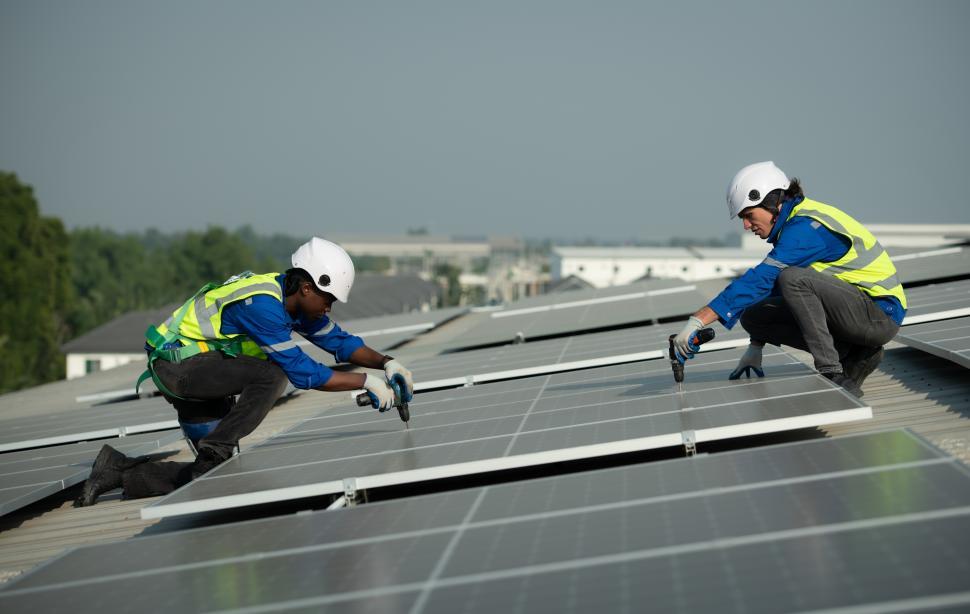Introduction
Solar inverters are the backbone of every photovoltaic (PV) system. They convert the direct current (DC) electricity generated by solar panels into alternating current (AC) electricity, which powers homes, businesses, and appliances. A well-chosen inverter not only ensures energy efficiency but also maximizes the performance and lifespan of the entire solar installation.
Understanding solar inverters is essential for homeowners and solar professionals alike. In this guide, we will explore the different types of inverters, how they operate, their advantages and disadvantages, and how to select the right inverter for your system. By the end, you will have a complete understanding of the role of inverters in solar energy systems and how to make informed decisions for your investment.
What is a Solar Inverter?
A solar inverter is an electronic device that transforms DC electricity produced by solar panels into AC electricity, which is compatible with your home appliances and the grid. Beyond simple conversion, modern inverters provide monitoring, system protection, and energy optimization features.
Key Functions of a Solar Inverter:
- Converts DC to AC power for home and grid use.
- Protects the PV system from electrical faults and overloads.
- Tracks the maximum power point (MPPT) to optimize panel output.
- Monitors energy production, consumption, and system performance.
Types of Solar Inverters
There are three primary types of solar inverters, each suited for specific situations:
1. String Inverters
String inverters, also known as central inverters, connect a series of solar panels into a single string. They are installed in one location, usually near the main distribution board.
Advantages: Cost-effective, simple installation, well-proven technology.
Disadvantages: Shading or damage to one panel can reduce output of the entire string. Less granular monitoring of individual panel performance.
String inverters are suitable for rooftops with uniform orientation and minimal shading. They are the most widely used in residential and commercial installations.
2. Microinverters
Microinverters are small inverters installed on each solar panel. They allow each panel to operate independently, optimizing output even if some panels are shaded or dirty.
Advantages: Improved efficiency in shaded or complex roof layouts, detailed panel-level monitoring, higher energy yield.
Disadvantages: Higher upfront cost, more components may increase installation complexity.
Microinverters are ideal for roofs with multiple orientations or partial shading, such as those with chimneys, trees, or nearby buildings.
3. Hybrid Inverters
Hybrid inverters combine solar conversion and battery storage management into one unit. They can simultaneously handle PV generation, home consumption, and battery storage.
Advantages: Seamless integration with batteries, energy independence, optimized self-consumption, support for smart energy management.
Disadvantages: Higher cost and complexity. Requires careful sizing to match solar panels and battery capacity.
Hybrid inverters are perfect for homeowners seeking backup power, load-shedding solutions, or maximizing self-consumption of solar energy.
How Solar Inverters Work
At a basic level, solar inverters take the DC power from solar panels and invert it to AC using advanced electronic circuitry. Modern inverters incorporate MPPT (Maximum Power Point Tracking), which continuously adjusts voltage and current to extract the maximum possible power from the panels.
Maximum Power Point Tracking (MPPT)
MPPT technology ensures that solar panels operate at their optimal voltage and current to produce maximum energy. The inverter constantly monitors panel output and makes small adjustments to maintain peak performance, even as sunlight intensity changes throughout the day.
Grid-Tied vs Off-Grid Operation
Grid-tied inverters synchronize the AC output with the utility grid, allowing excess energy to be exported for credits via net metering. Off-grid inverters manage energy storage and ensure continuous power supply during grid outages.
Choosing the Right Inverter
Selecting the correct inverter involves several factors:
- System Size: Ensure the inverter capacity matches your PV array.
- Roof Layout: Shaded or multi-orientation roofs benefit from microinverters.
- Budget: String inverters are cheaper upfront; micro and hybrid inverters offer better performance but higher costs.
- Battery Integration: Choose a hybrid inverter if you plan to add battery storage.
- Warranty and Reliability: Longer warranties often indicate better quality and support.
Installation and Safety
Proper installation is crucial for safety and system longevity. Only qualified electricians should handle inverter installation. Key safety considerations include:
- Proper grounding and earthing
- Correct fuse and circuit breaker sizing
- Compliance with local electrical codes
- Protection against lightning and surges
Monitoring and Maintenance
Most modern inverters offer remote monitoring via apps or web portals. Regular monitoring helps identify issues early and ensures the system performs efficiently over its lifespan.
Maintenance is minimal: clean vents, check connections periodically, and ensure firmware updates are applied if available.
Financial and Performance Considerations
While inverters are a smaller portion of total system cost, they directly affect energy yield and ROI. Microinverters or hybrid inverters may increase upfront cost but provide higher long-term returns, especially in complex roofs or when paired with batteries.
Conclusion
Understanding solar inverters is essential for optimizing your PV system. Choosing the right type based on roof conditions, shading, energy needs, and future plans for storage ensures maximum efficiency, reliability, and savings. Whether opting for string, micro, or hybrid inverters, proper installation, monitoring, and maintenance will ensure your solar system delivers clean energy for decades.


